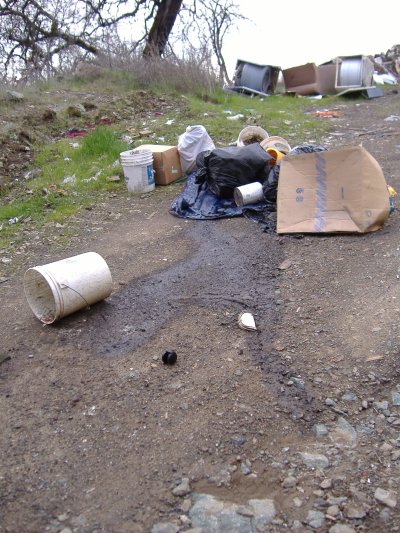
From left, Coach Mike Humble, Tyler Hayes and Coach Nick Lavelle hold Hayes' third place bracket sheet from the North Coast Section Championships. Photo courtesy of Ginny Craven.
LAKEPORT – Looking at Tyler Hayes, the words “small but mighty” come to mind.
The 18-year-old Clear Lake High School wrestler's small, sculpted frame weighs in at 103 pounds. He's polite, soft-spoken and friendly, and has a firm handshake as an introduction.
But once he steps onto the wrestling mat, the fierce competitor comes out.
On Friday morning Hayes will begin competition at the State Wrestling Championships at Bakersfield's Rabobank Arena. He's the only Lake County wrestler to reach that competition this year.
He'll have to win two out of three matches on Friday in order to advance into the weekend competition, explained his coach, Mike Humble, who has guided the Clear Lake High wrestling team for eight years.
The entire Hayes family – including parents, grandparents and siblings – left Thursday to make the trip to Bakersfield.
He's had a strong career as a high school wrestler, medaling at the North Coast Section championships for three years. This year he was league champion for his weight group, the smallest of 14 weight classes, said Humble.
Wrestling takes dedication and stamina. After-school practices take place five days a week and last between three and a half and four hours, said Hayes. They include a 2.7-mile run, two hours of wrestling and, on some days, weight training. Then there are weekend tournaments.
Hayes competes in track and field and runs cross country, which has given him endurance, another good trait for a wrestler to have, Humble said.
While doing all of that, Hayes maintains straight As in his school work.
Assessing Hayes' talent, Humble pointed to his strengths. "For his weight class, he's very strong, so strength is a big factor in his abilities."
Hayes also walks onto the mat with confidence. When he loses, dad Gary points out, he tends to learn from it and come back, beating the same opponent he lost to in their next meeting.
“I have to go in with the attitude I'm going to win,” Hayes said.

Tyler Hayes pins opponent. Photo courtesy of Ginny Craven.
His trip this weekend caps off some strong years for his team, which has struggled to fill all of its weight classes consistently, said Humble, who wrestled at Petaluma High School and works as a California Highway Patrol officer.
Yet, the 16-member team has been getting stronger, said Humble. “The kids that we get through here are quality.”
That may be helped by the middle school wrestling program. Hayes and Humble spent Wednesday afternoon working with the younger children, two of which included Hayes' younger sisters.
Hayes himself began wrestling at a young age, in the fourth grade, coached by Rob Brown and Ronnie Campos. His older brothers, Michael and Benjamin, also wrestled.
“It's fun,” Hayes said of his family's enthusiasm for the sport. “We all like it.”
That's despite the fact that Hayes has had his fair share of injuries, ranging from putting out his back to a separated shoulder and an injured ankle.
During the last few years local wrestlers have gone far, says Humble. In 2006, Steve Franklin of Middletown High and David Laird of Clear Lake High both competed at the state meet. Franklin went all the way to the National High School Wrestling Championships, while Laird finished ninth at state – just one slot away from a trip to nationals.
In 2007, Clear Lake wrestlers Justin Mills and Michael Knoppman competed at the state meet.
Hayes definitely wants to keep wrestling, so he's looking at attending Santa Rosa Junior College. Coach Humble said the school has a good record of getting wrestlers placed a colleges and universities. Hayes said he's thinking about enlisting in the Coast Guard.
What is it that keeps him working hard at this tough sport?
“I like that it's one on one,” said Hayes. “When you're out there, you make a mistake, it's on you.”
He added, “When you get your hand raised after a match, it's a great feeling.”
E-mail Elizabeth Larson at This email address is being protected from spambots. You need JavaScript enabled to view it..
{mos_sb_discuss:2}

 How to resolve AdBlock issue?
How to resolve AdBlock issue? 











